How Brands Can Benefit From Micro-Influencer Marketing
One of the easiest ways to get in front of your ideal audience is to collaborate with an influencer that already has a loyal following of your target audience.
For this reason, micro-influencer marketing has become a popular marketing strategy. In fact, micro-influencer marketing is often more effective than macro-influencer marketing as the audiences tend to be more niche and therefore convert much higher than celebrity influencers with more general audiences.
In this post, we’ll discuss the benefits and drawbacks of micro-influencer marketing, and how you can find and choose micro-influencers to work with for your next marketing campaign.
What Is a Micro-Influencer in Marketing?
A micro-influencer is an individual with many followers within a specific niche. Individuals are typically considered “micro-influencers” when they have a following of between 1,000 and 100,000 followers.
A subset of micro-influencers are nano-influencers, who typically have a following of 1,000 to 10,000 followers.
What Are the Benefits of Working With a Micro-Influencer
The unique aspect that sets micro-influencer brands apart from macro-influencer brands (100,00+ followers) is the intimacy of the audience. These audiences tend to have the same niche interest and are more loyal because micro-influencers can engage with them more frequently than macro-influencers.

Source: Tim Davidson
Here are a few benefits of leveraging a smaller yet highly engaged audience.
Comparatively Lower Lead Acquisition Costs
If you hire a macro-influencer to run a campaign, there’s a good chance that only a portion of their audience are your ideal customers.
So, if they have an audience of 250,000 followers, yet only about 25% of those followers are within your ideal audience, the number of ideal potential customers you’re getting in front of is really only 62,500.
Furthermore, macro-influencer audiences tend to be much less loyal as macro-influencers can’t individually engage with each of their followers to build trust, so conversion rates are also typically lower.
Therefore, you may only convert a small percentage of those 62,5000 followers who are a good fit for your product or service. Nevertheless, you’ll still pay a premium based on the influencer’s total follower count.
For these reasons, micro-influencer marketing costs are often much lower.
As a micro-influencer’s follower count is much lower, you’ll only pay for a fraction of the price. But, the audience engagement tends to be much higher, which often results in higher conversion rates.
High Quality Brand Awareness
Another benefit of micro-influencer marketing is that it increases your brand’s credibility.
If potential customers trust an influencer promoting your brand, that trust also extends to your brand.
The association of your brand with popular industry influencers will also boost your credibility within the general industry and can help you land new partnerships, attract talent, and develop important industry relationships.
Promotion Quality and Campaign Efficiency
Micro-influencers are more likely to work with your brand one-on-one to create and plan the campaign as they likely have smaller teams and must be more hands-on in brand partnerships.
This means you’re more likely to get more creative, on-brand marketing materials than if you work with a macro-influencer.
In fact, most macro-influencers aren’t involved at all in the campaign creation process, which can result in a less creative marketing campaign. You’ll likely be able to provide only limited feedback and guidance. The influencer’s lack of involvement can also make the campaign seem less authentic.
Reduced PR Risk
If a major influencer says or does something controversial, the brands that partnered with that celebrity often feel ripple effects from the backlash, and it can tarnish their brand reputation. As a result, brands may have to spend more money on reputation management campaigns to communicate to their audience that they don’t support those remarks.
In contrast, if a micro-influencer makes a controversial remark, it’s much less likely to go viral and is often overlooked altogether.
As a result, your brand won’t feel as much of a backlash, and you might not have to spend any money on reputation management.
How To Find Micro-Influencers
Macro-influencers are relatively easy to find as they have massive audiences and are typically household names. Micro-influencers can be a little trickier to discover.
Here are a few methods to unearth quality micro-influencers to participate in your marketing strategy.
Start With Your Employees
Many of your executives and key employees probably already have substantial networks and are micro-influencers in their own right. Here’s a great example of how a company employee can promote your brand:
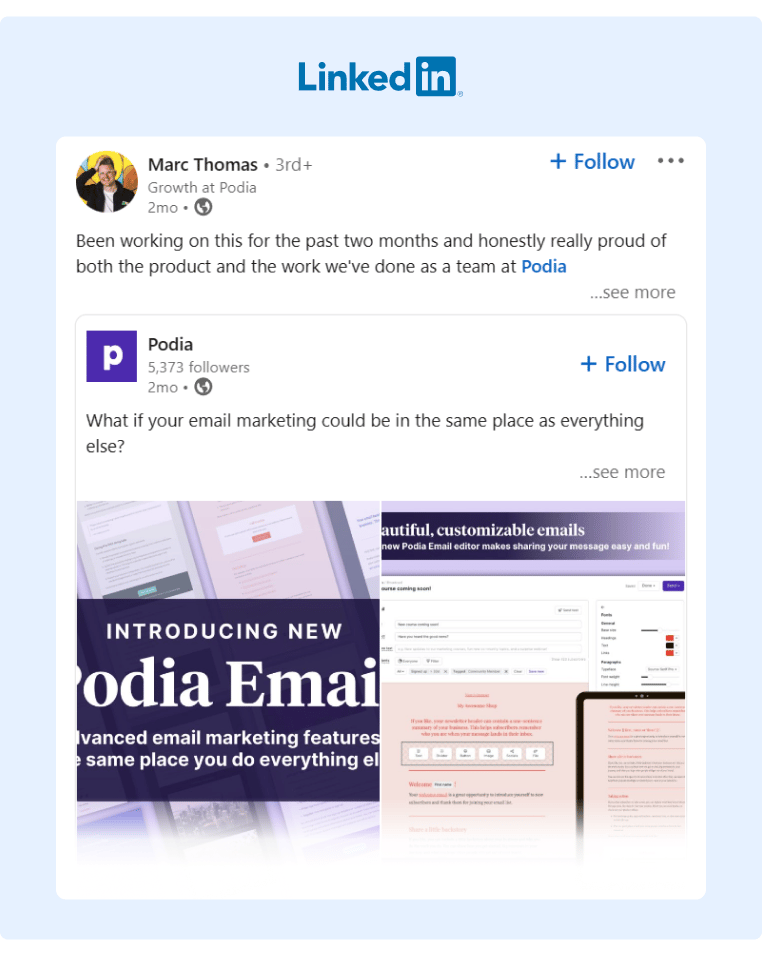
Source: Marc Thomas
So, before looking for external influencers, scan through your list of employees and their follower count on each platform.
Then, create an employee advocacy program that regularly sends specific engagement requests to key employees and team members.
It’s important to have a structured program, as you’ll likely find that generically asking employees to share content results in low engagement rates. It's easy for executives to forget to engage, or they may not know what to say or share, ultimately putting the task further down their to-do list.
To make it easy for you to assign engagement activities and for executives to complete them, consider using an employee advocacy tool like GaggleAMP. It lets you quickly create engagement activities that specify the platform (LinkedIn, Pinterest, X, etc.), action (like, share, comment, etc.), and any additional details you wish to add like a post link or even pre-written text.
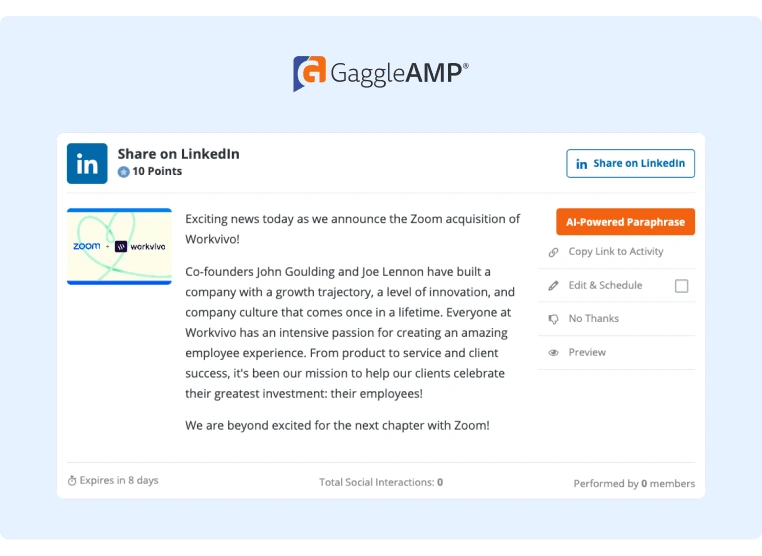
You can then assign the activity to a specific employee or group of employees. They can log into their personal dashboard to view, complete, and schedule the assigned engagement activities.
This makes it easy to keep them engaged and track the ROI of your employee advocacy program.
You can learn more about how GaggleAMP works today by reading about its features or scheduling a demo.
Use a Micro-Influencer Marketing Platform
There are plenty of micro-influencer marketing platforms that make it easy to search and find micro-influencers to partner with for your next campaign.
Most of these platforms only allow vetted influencers, which reduces the risk of hiring a fraudulent influencer.
They also usually provide detailed engagement metrics and audience details for each influencer:
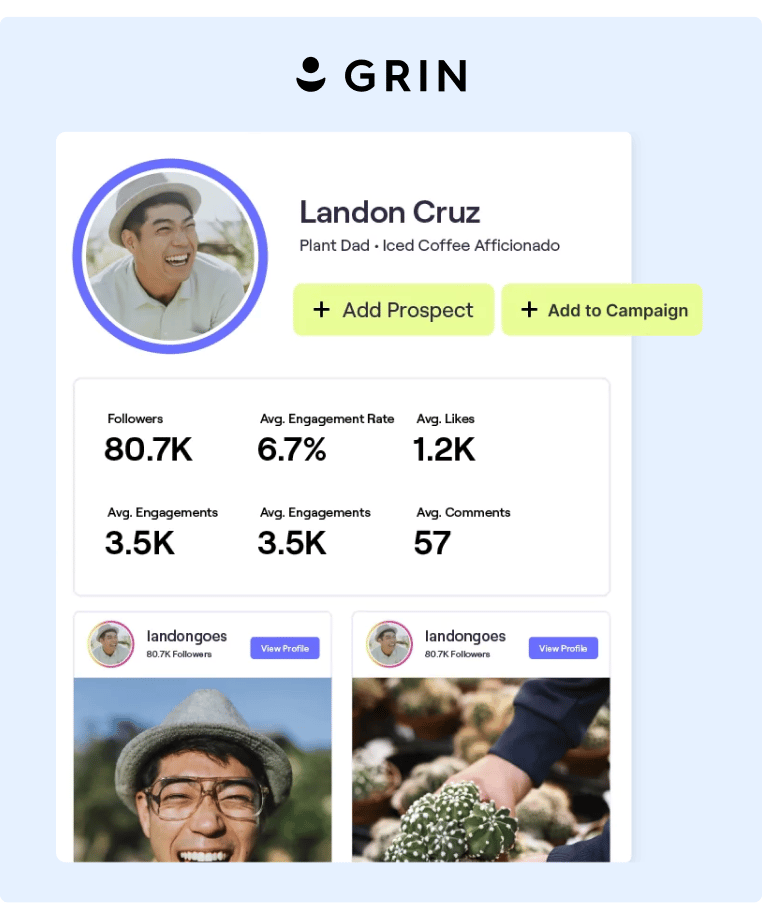
Source: Grin
Once you select a micro-influencer, you can typically coordinate the campaign, track performance, and pay them directly through the platform.
Some popular micro-influencer marketing platforms include Creator.co, Grin, and Impact.
Scan Your Customer List
The most authentic influencer partners are your own customers who are already paying money for your product or service. They can speak about the value of your product from personal experience, making the campaign more authentic and compelling.
In fact, you can even reuse these marketing campaigns as customer testimonials, further boosting your brand’s credibility.
Browse Parallel Brands’ Influencer Campaigns
You might not want to partner with a micro-influencer who is promoting a direct competitors' product or service. Still, you can find excellent potential partners by looking at the micro-influencers that partner with parallel brands.
You can identify these influencers by doing some simple hashtag research. Just search the parallel brand's name, and you'll find the posts with the highest engagement.
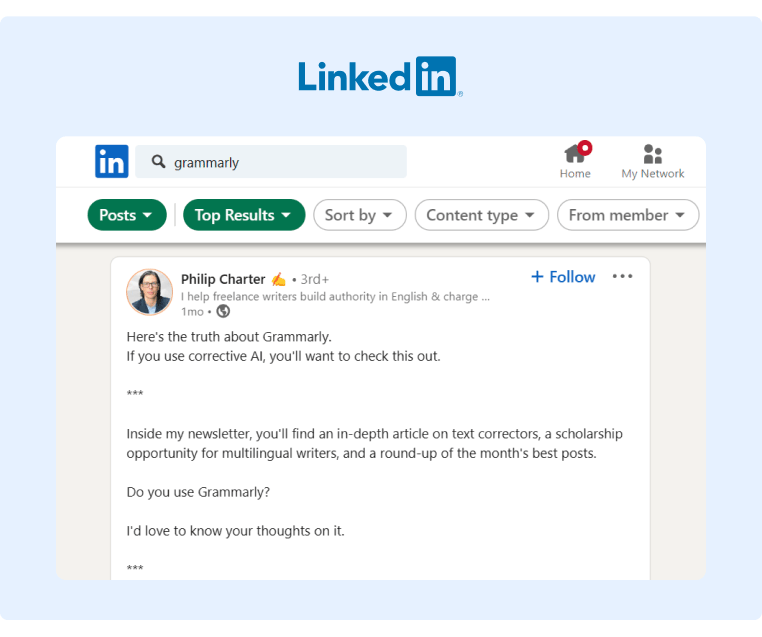
To get the micro-influencer’s attention, you can comment on the post and then send them a message mentioning how your brand has similar values.
For example, if you have a competitor to Grammarly, this micro-influencer might be a great person to reach out to regarding a potential partnership opportunity:
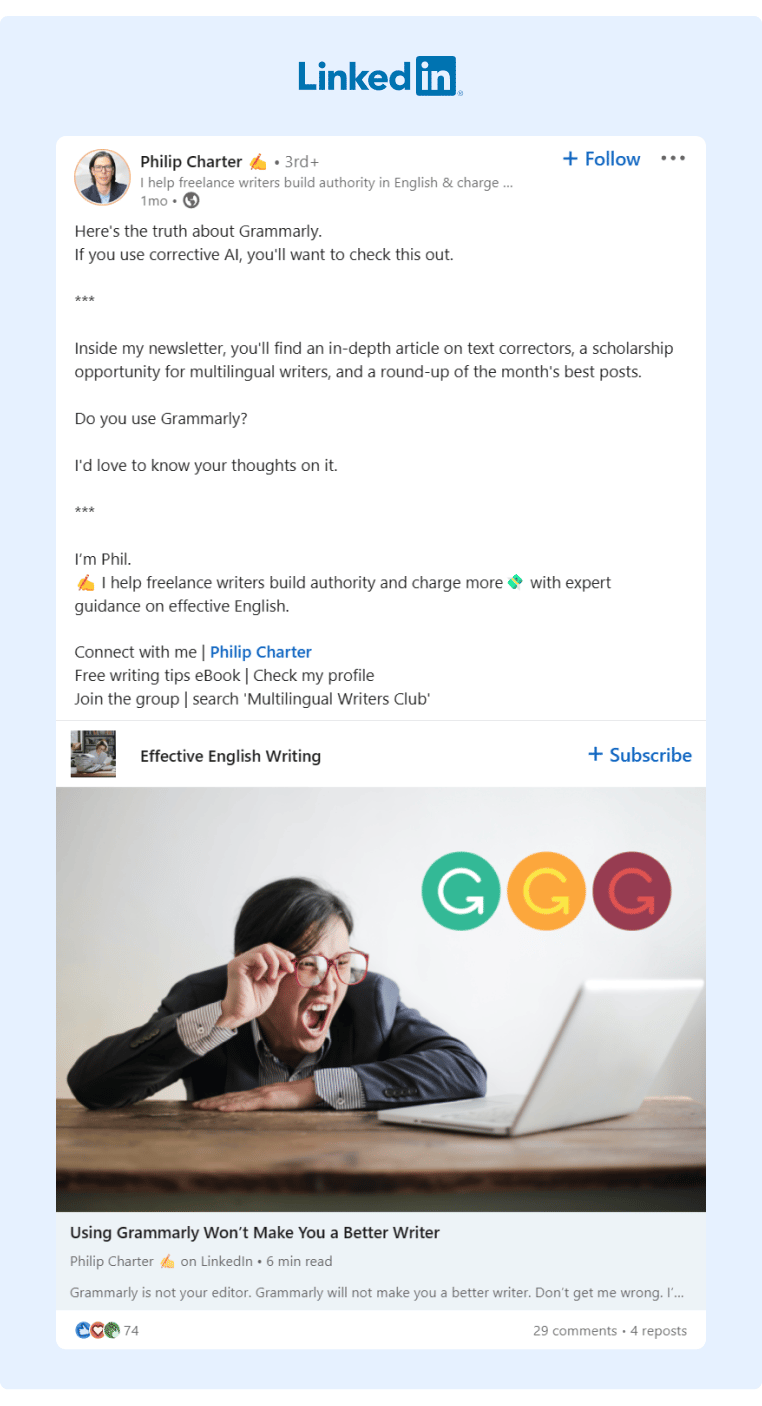
Source: Phillip Charter
Maria Harutyunyan is another example of a great potential partner you could reach out to:
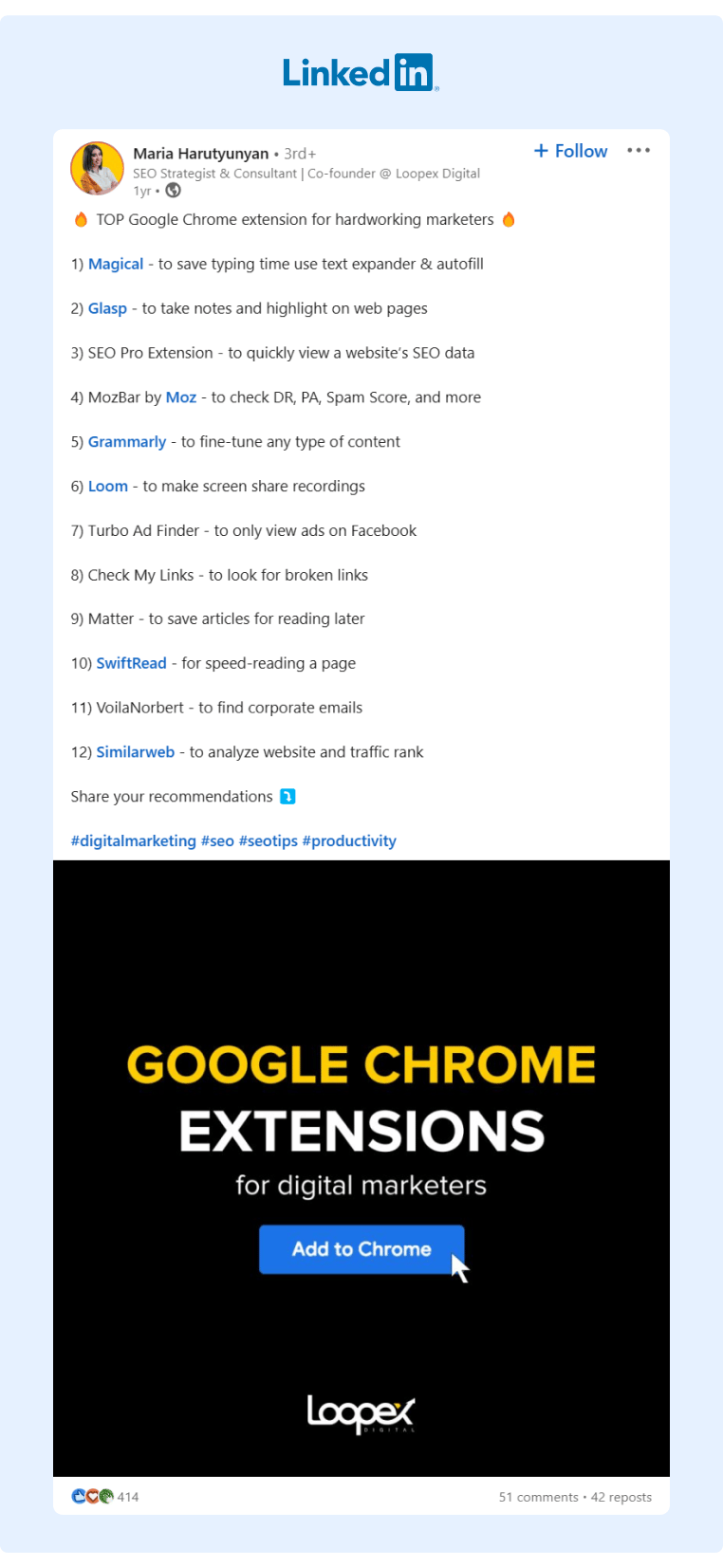
Source: Maria Harutyunyan
Leverage Social Listening Tools
Social listening tools can help you identify popular conversations within your industry, and those popular conversations typically have high engagement because an authoritative influencer started them.
To find micro-influencers, track only very specific hashtags and keywords. If your search is too general, you'll likely only discover social media posts from macro-influencers.
For example, a relevant keyword for us to track with a social listening tool might be "employee advocacy." By tracking it, I encountered this employee advocacy post. After looking at the author's profile in more detail, I can see that this person is a micro-influencer who might be a great potential partner for future marketing campaigns:
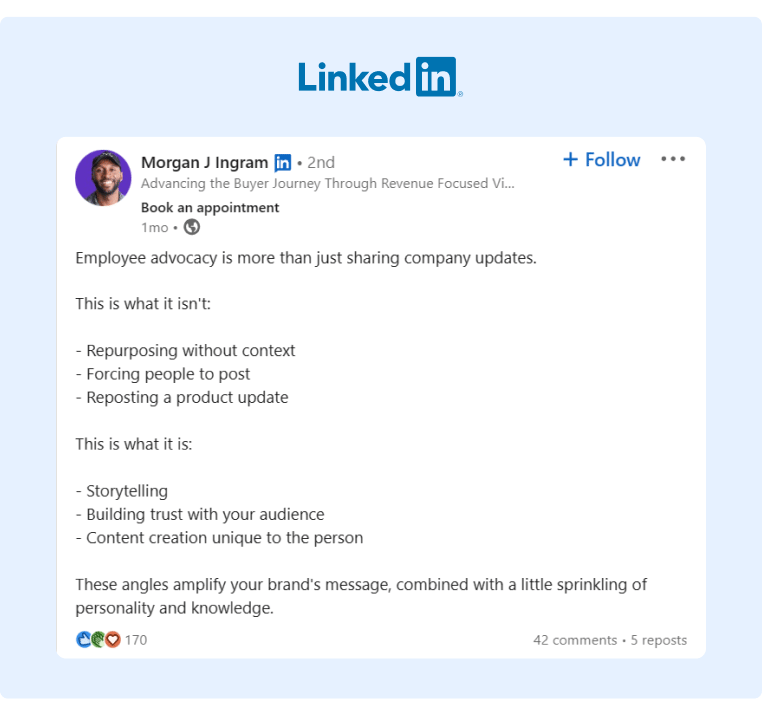
Source: Morgan Ingram
Ask Your Customers
If you're still unsure which micro-influencer you should work with, just ask your customers who they respect and follow.
For example, you can send a simple email to your list asking them which newsletters they subscribe to and which social media accounts they follow.
Then, reach out to those micro-influencers. You can mention that your audience already loves them, and you could even offer to cross-promote their content.
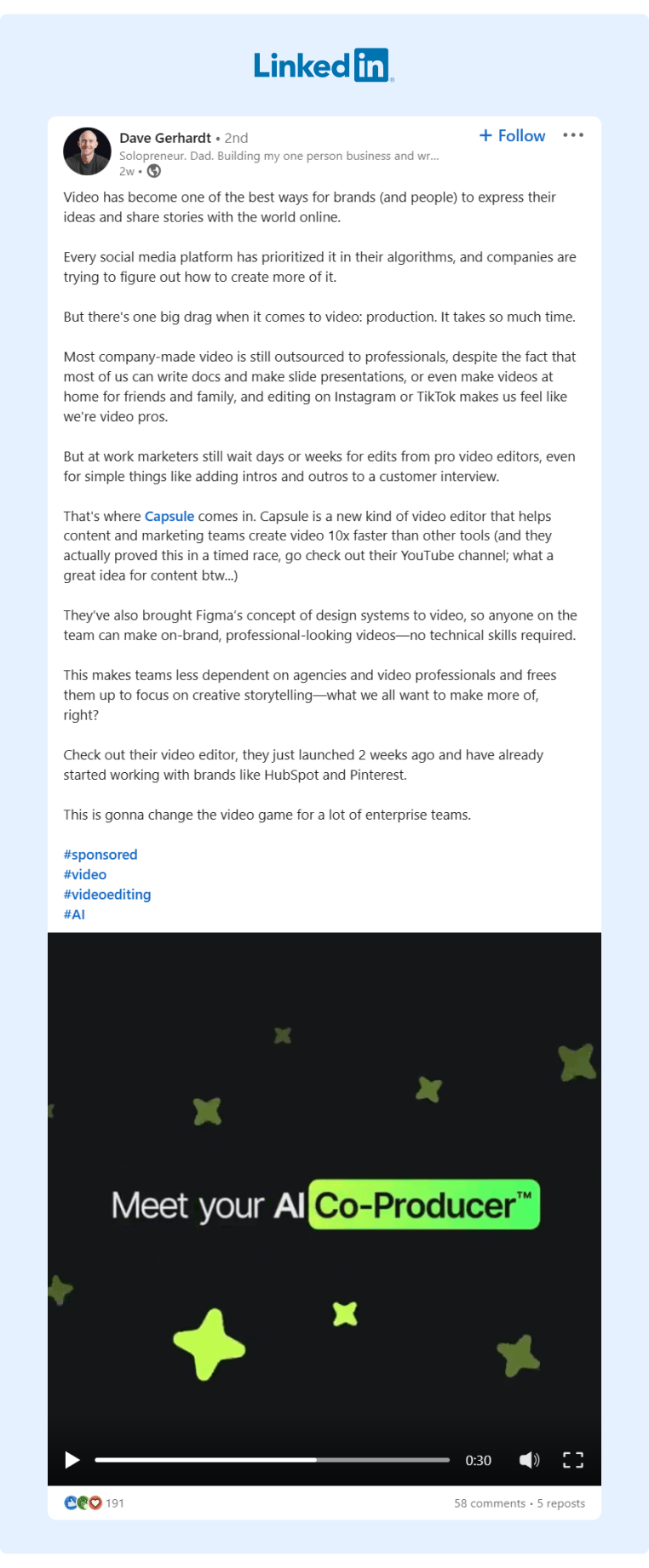
Source: Dave Gerhardt
Examples of Micro-Influencer Opportunities
To inspire your next micro-influencer marketing campaign, here are a few different examples of brands that regularly work with micro-influencers.
Brands That Collaborate With Micro-Influencers on Instagram
HelloFresh
HelloFresh regularly collaborates with influencers to grow their Instagram account.
Some of their campaigns are simple posts or videos promoting their product, like this one from The Hungry Fam:
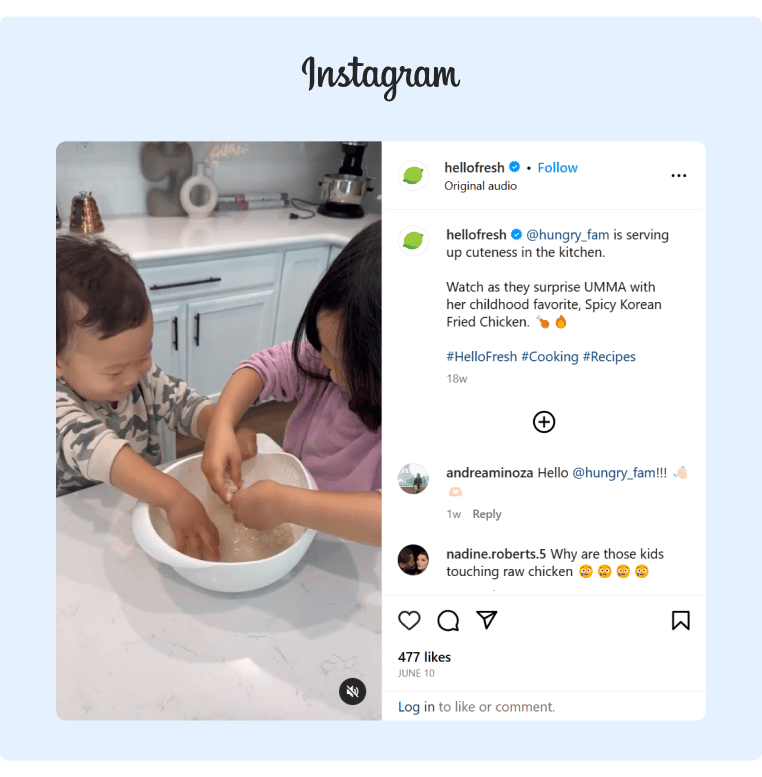
Source: HelloFresh
However, they’ve also collaborated with micro-influencers that only have a few hundred or thousand followers to create humorous skits like this one from The Musical News.
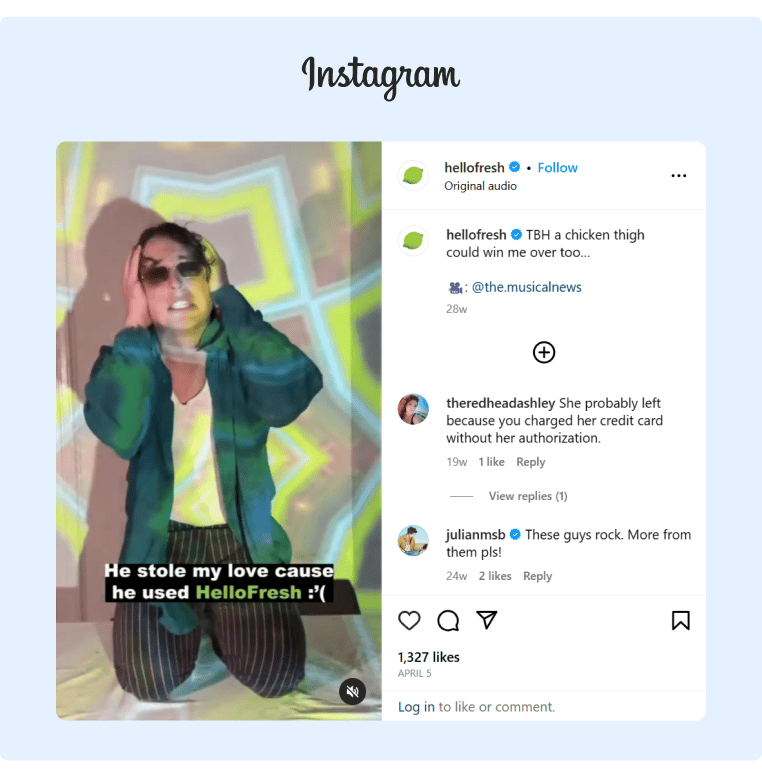
Source: HelloFresh
So, if you want great content for a bargain, you can simply hire a micro or nano-influencer to create a skit for you.
Audible
Audible takes a unique approach to micro-influencer marketing on Instagram. Instead of just asking influencers to discuss what they love about Audible, they ask authors and creators to discuss their latest literature available on Audible.
Here’s an example of Travis Beacham, who has a moderate audience, discussing his latest work:
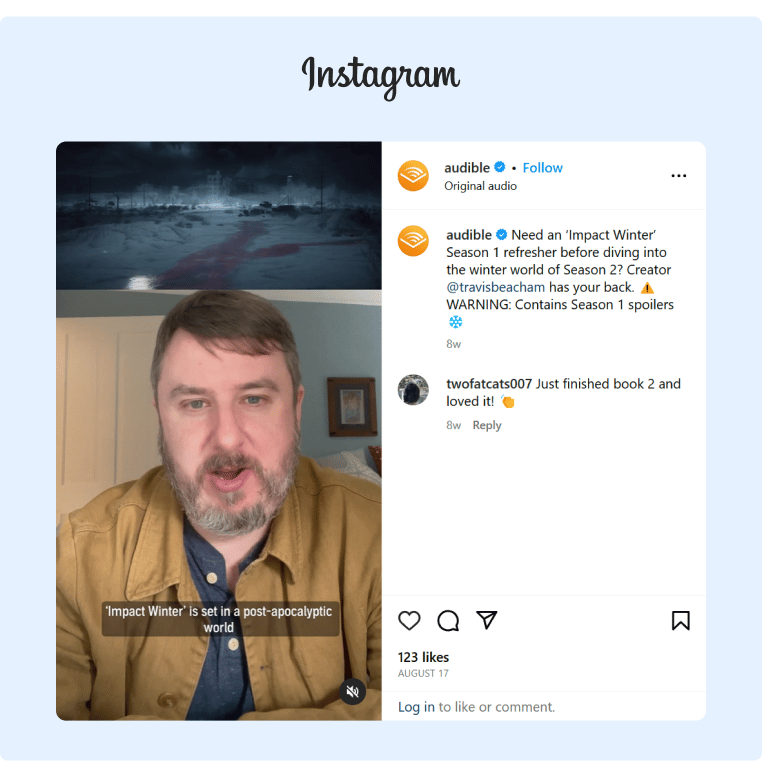
Source: Audible
Canon
Canon is a camera brand, so it’s no surprise that Instagram is the platform they prioritize. Here, they worked with micro-influencer Juliana Broste (about 7,000 followers) to showcase their new camera:
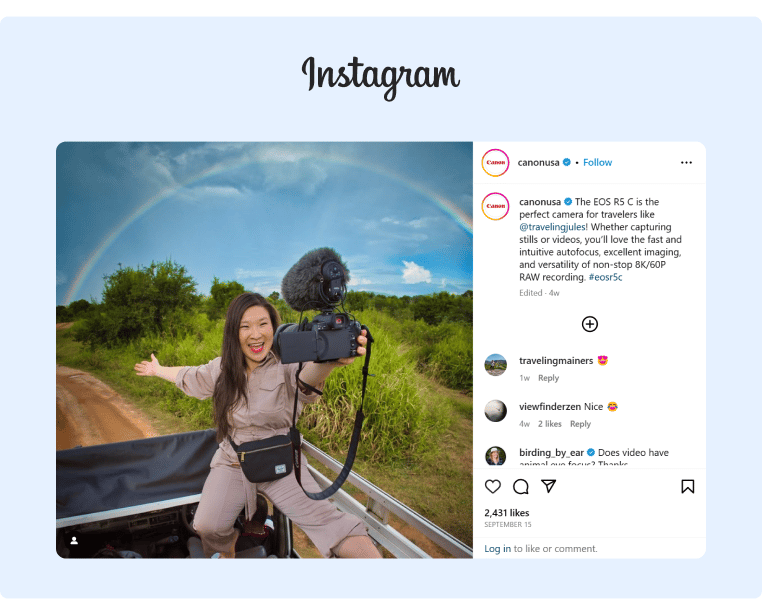
Source: Traveling Jules
Brands That Collaborate With Micro-Influencers on TikTok
Etsy
Etsy regularly collaborates with their sellers to feature content showcasing their latest creations. For example, here they showcase micro-influencer Melanie Abrantes (16,000+ followers) and her latest carvings available on Etsy.
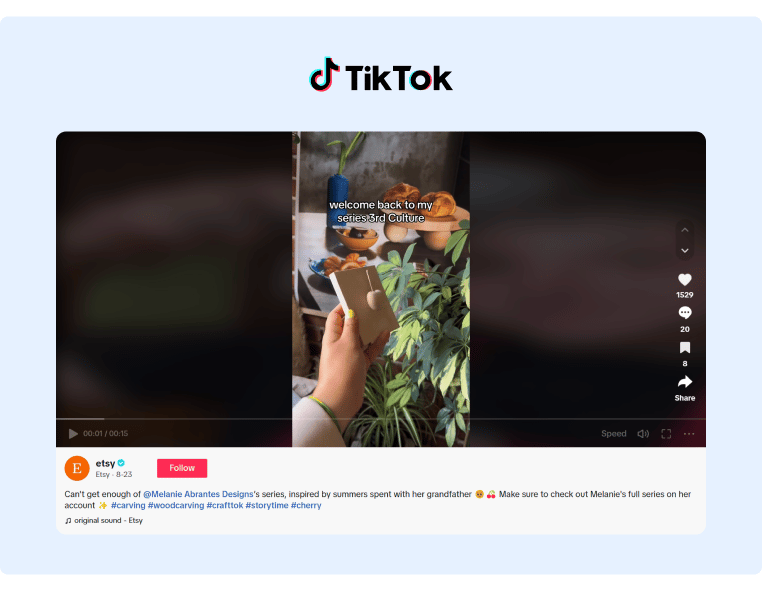
Source: Etsy
In this case, Etsy isn’t even paying for the influencer content. Look through your current customer list and then reach out to micro-influencers creating content relevant for your brand and ask if you can share it to your account.
Home Depot
Home Depot occasionally collaborates with micro-influencers to grow its Instagram account. Here, they collaborated with Simply Handmade (35,000+) for a Juneteenth campaign:
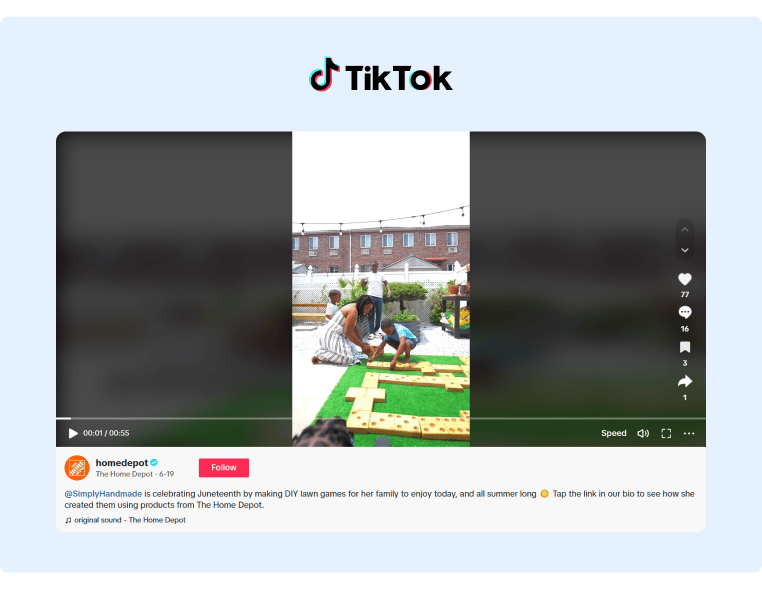
Source: Home Depot
Fashion Brands That Work With Micro-Influencers
Lululemon
Lululemon has a thriving ambassador and influencer program, so it’s no surprise that they have plenty of examples of excellent influencer marketing campaigns. They recently ran a back-to-school campaign where various micro-influencers showcased their first week of school in new Lululemon outfits. Here’s an example from micro-influencer Alexis Barber (18,000+ followers):
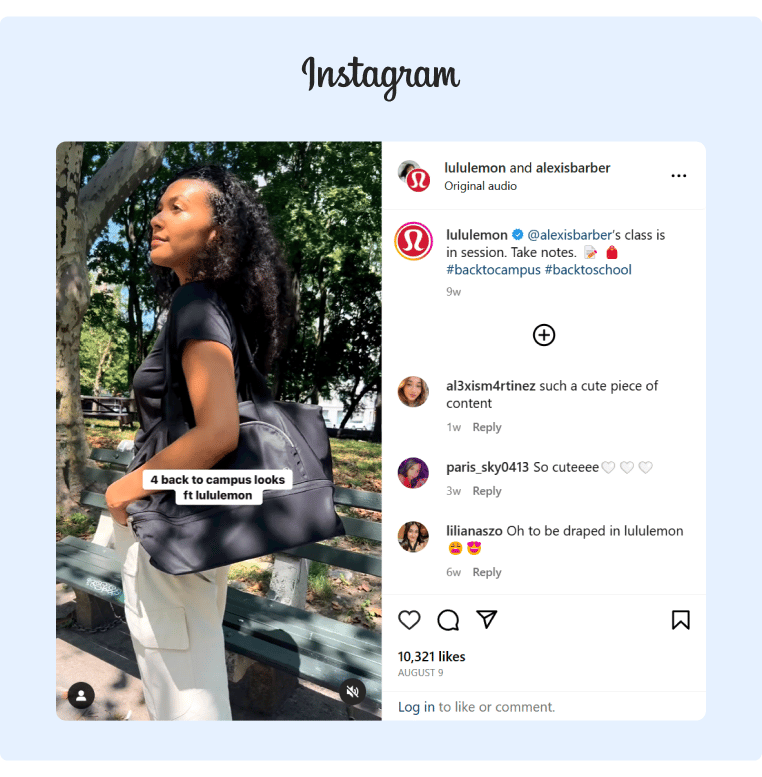
Source: Lululemon
PinkBlush
This maternity clothing brand relies heavily on influencer marketing to promote its products. Here’s just one example of a collaboration they did with micro-influencer Vanessa Evelyn (39,000+ followers):
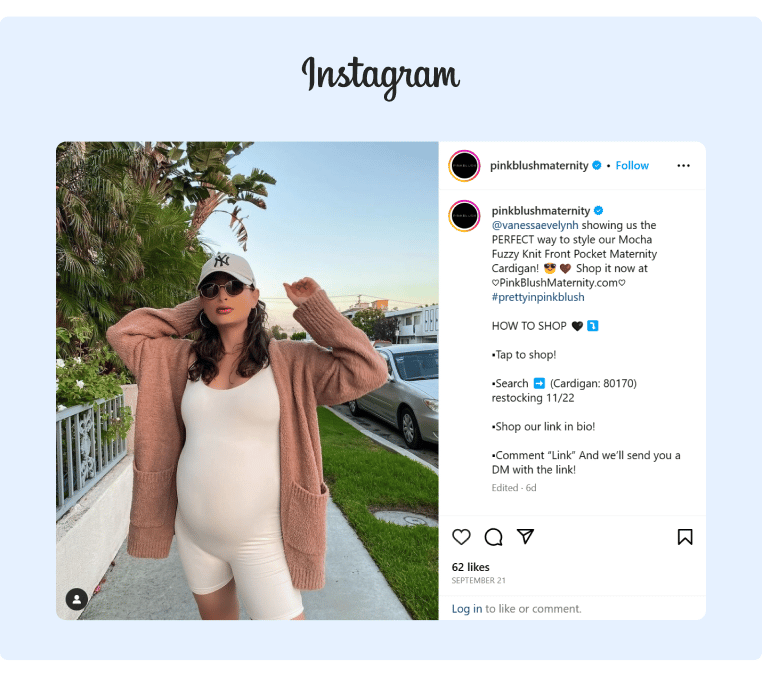
Source: PinkBlush
PinkBlush also recently promoted its partner and affiliate program, which undoubtedly also includes influencer marketing.
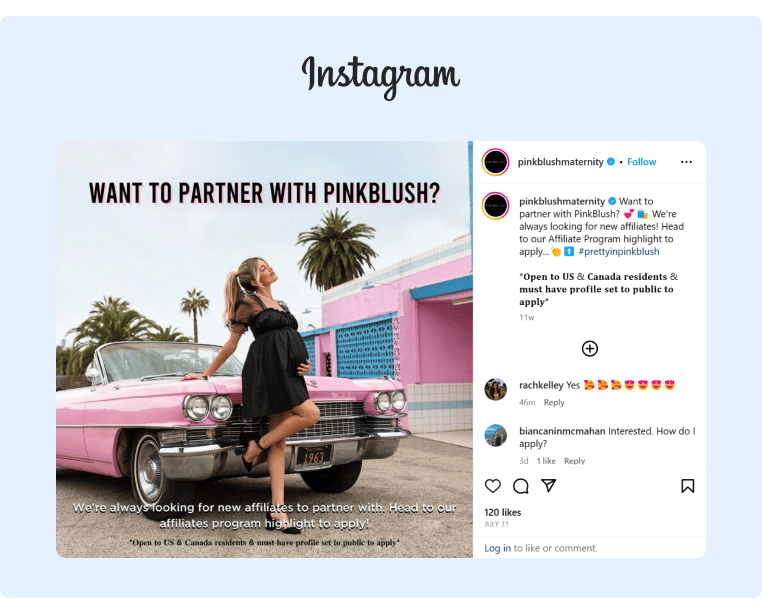
Source: PinkBlush
Beauty Brands That Work With Micro-Influencers
Glossier
Glossier is a makeup and skincare brand that collaborated with micro-influencer Michaela to demonstrate how to use their products. These product use case videos tend to perform very well for beauty brands.
Here’s an example of one of their collaborations:
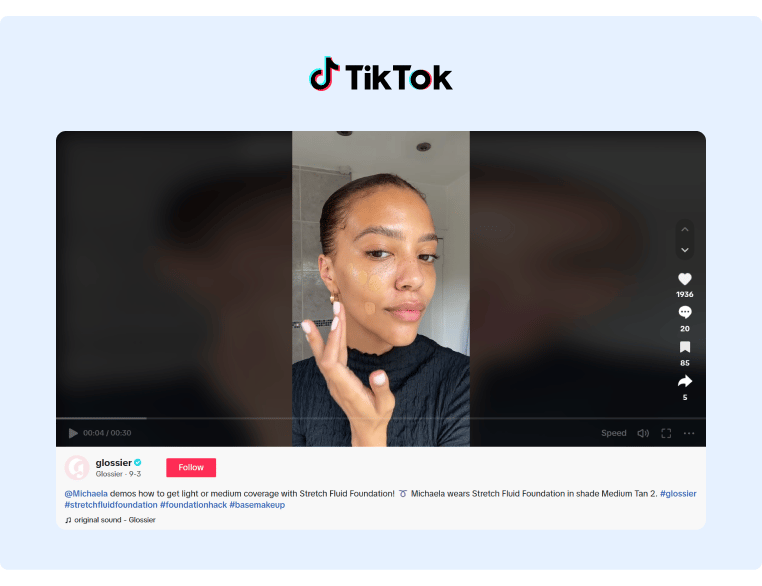
Source: Glossier
ColourPop Cosmetics
ColourPop Cosmetics regularly collaborates with micro-influencers who are already using their products. Here’s an example of micro-influencer Toria Lynaee (2,000+ plus followers) featuring one of their latest color palettes:
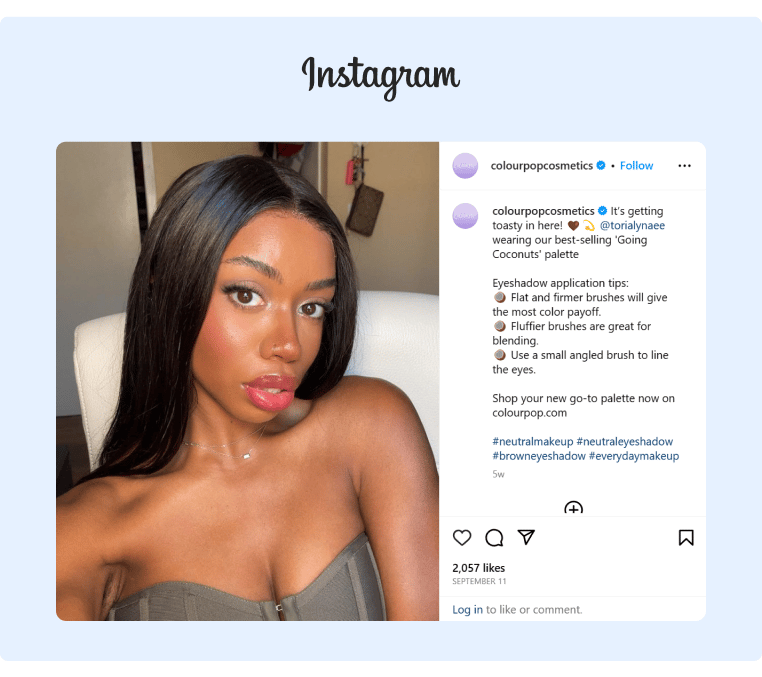
Source: ColourPop
B2B Micro-Influencer Relationships
If you’re running a B2B brand, micro-influencer relationships are invaluable for building credibility and generating leads.
Here are a few great examples of brands that have mastered micro-influencer marketing.
ClickUp
ClickUp is one of the fastest growing project management brands in the market, and they have plenty of excellent micro-influencer partnerships.
Many of their employees have built personal brands that they can then leverage to promote the company. For example, this employee has built a personal brand of nearly 10,000 followers and he regularly shares updates from the company, like this one announcing that ClickUp is at Inbound:

Source: Chris Cunningham
Here’s another example of an employee who has built a following of several thousand followers and now leverages that audience to promote product launches and other company news:
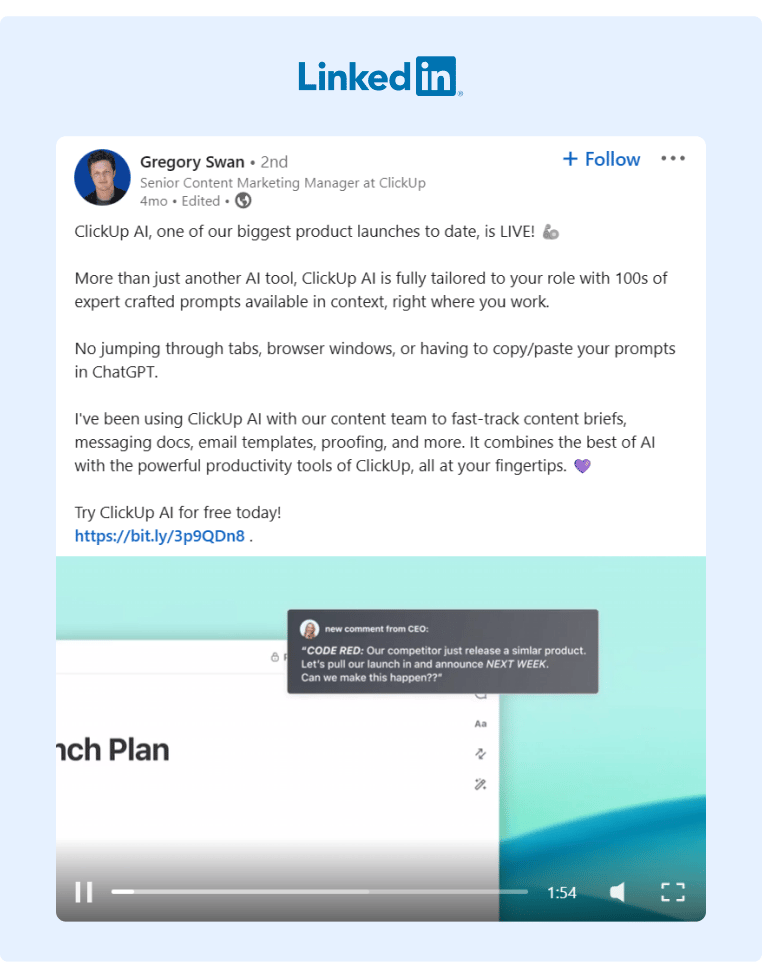
Source: Gregory Swan
ClickUp also has partnerships with various brands, consultants, and agencies:
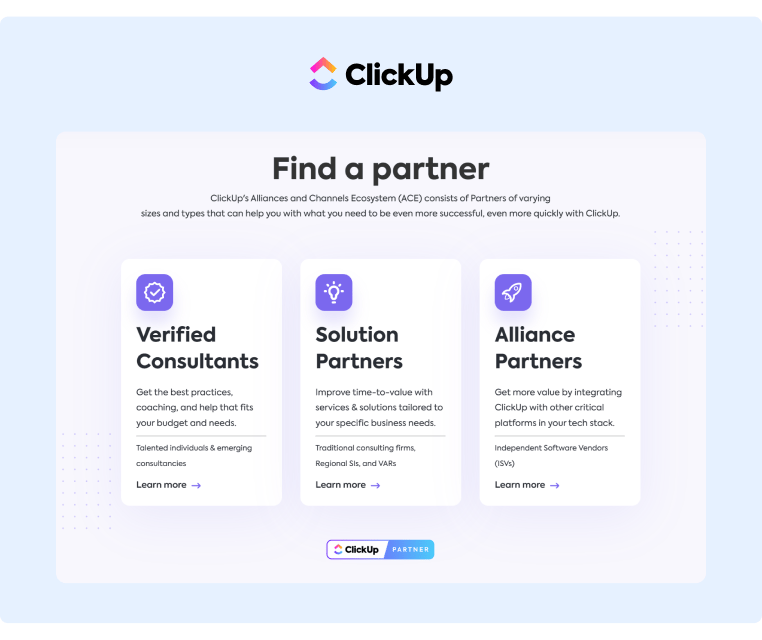
Source: ClickUp
This helps them generate more brand awareness and leads, and it’s also a great way to improve their customer success as these partners also want their clients to succeed on ClickUp.
Here’s just one example of a solo consultant (with several thousand followers) who has partnered with ClickUp. Now she creates helpful content on how to use ClickUp for various tasks:
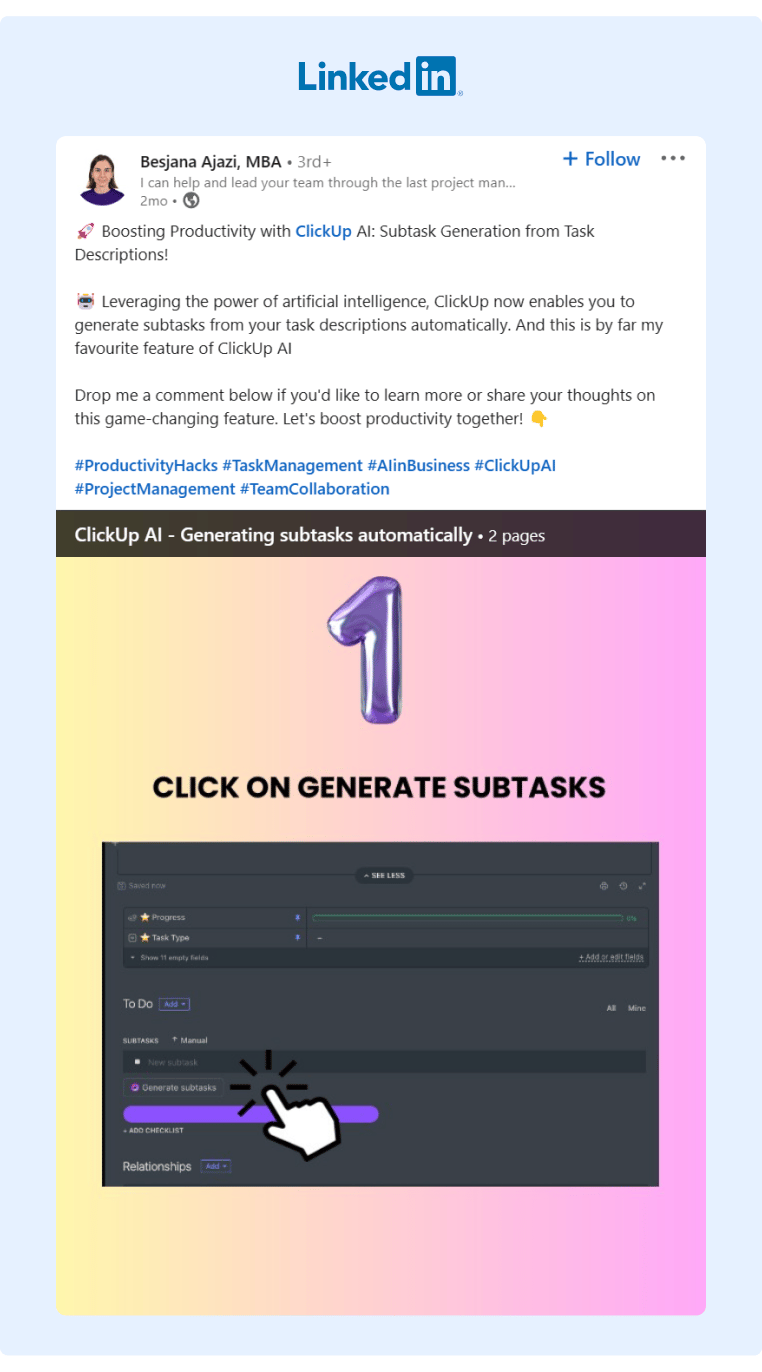
Source: Besjana Ajazi
Canva
Canva is another excellent example of a B2B brand that actively leverages both internal and external micro-influencers advocates.
For example, this employee has nearly 5,000 followers and leverages her audience to promote product launches and news from Canva:
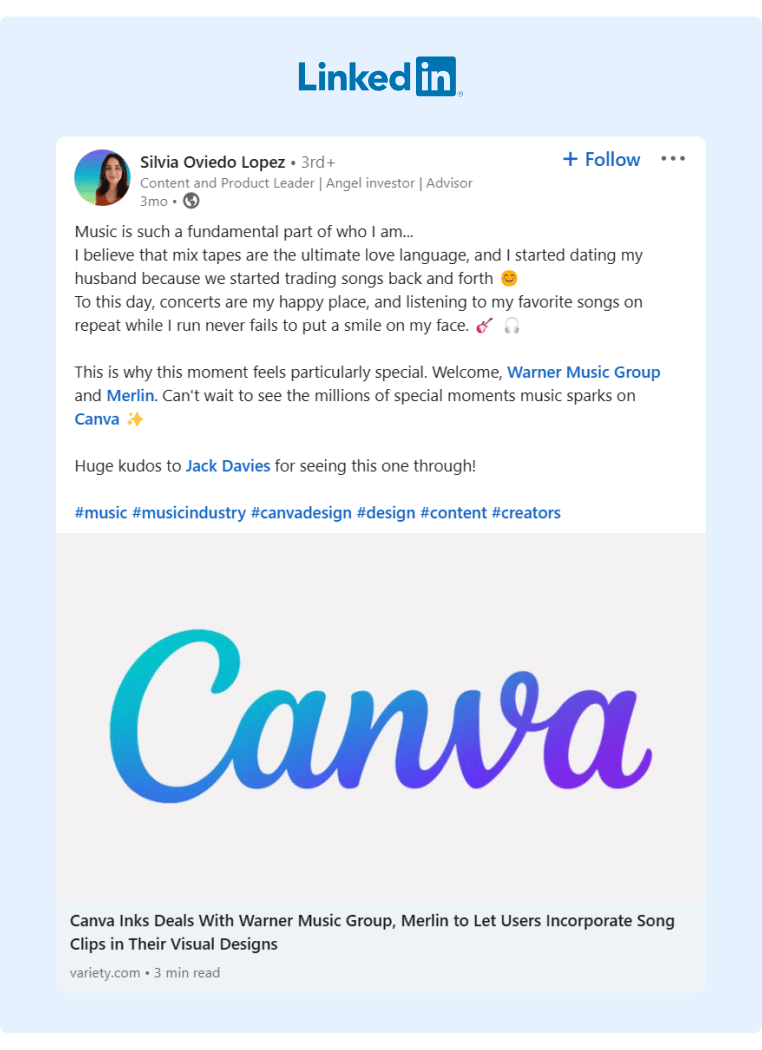
Source: Silvia Oviedo Lopez
Canva also collaborates with external micro-influencers who create product tutorials and other content demonstrating how creators and business leaders can use Canva:
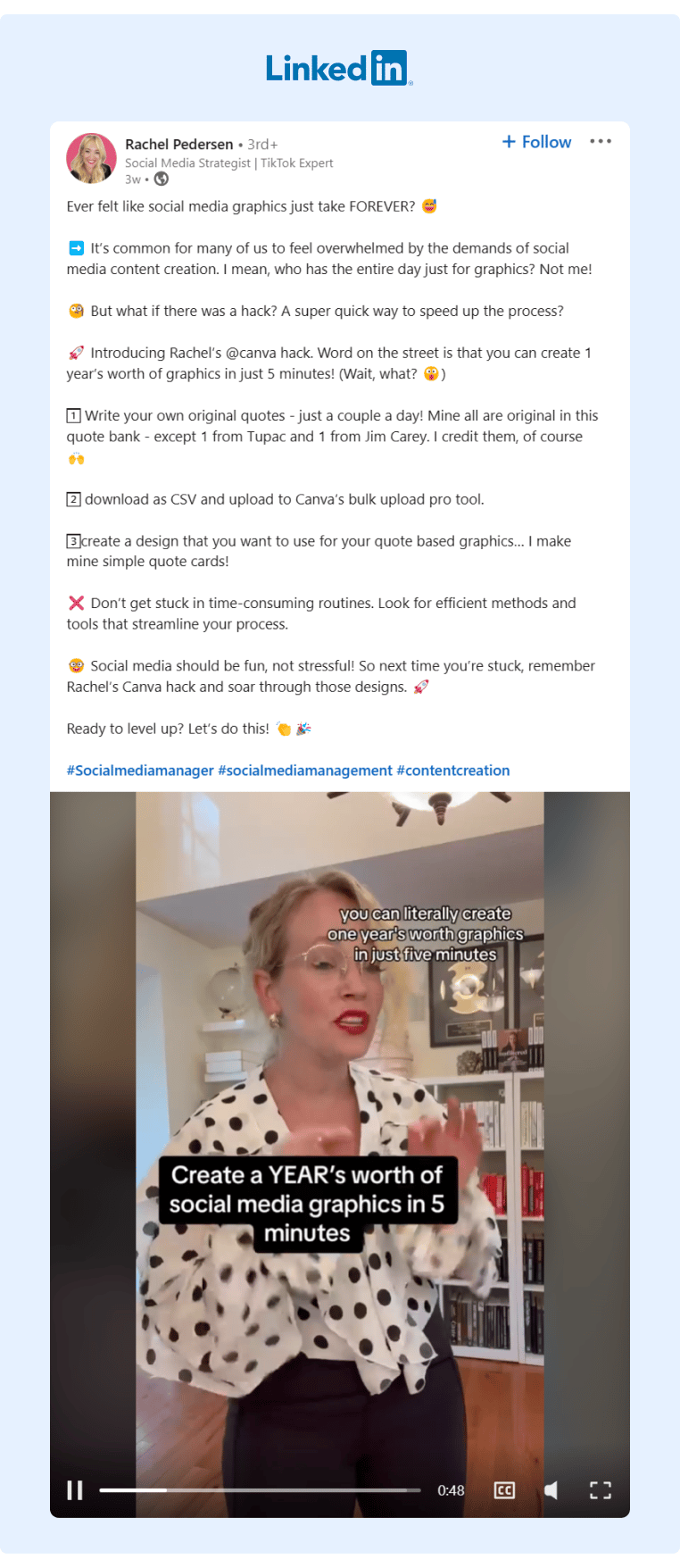
Source: Rachel Pedersen
Start Your Micro-Influencer Marketing Strategy Today
Rather than shelling out thousands of dollars to hire a macro-influencer to promote your brand, start with just a few micro-influencer campaigns.
The easiest way to get started is to identify the micro-influencers within your own company and ask them to share content about your company’s mission, promote product launches, and share company news.
To organize your employee advocacy program, consider leveraging a platform like GaggleAMP that makes it easy to assign employee engagement activities at scale and track employee participation.
GaggleAMP also allows employees to view, complete, and schedule their engagement activities directly inside their personal Gaggle portal. You can also track employee participation, total engagement, and the ROI of your advocacy efforts.
To learn more, schedule a demo or sign up for a free trial today.










